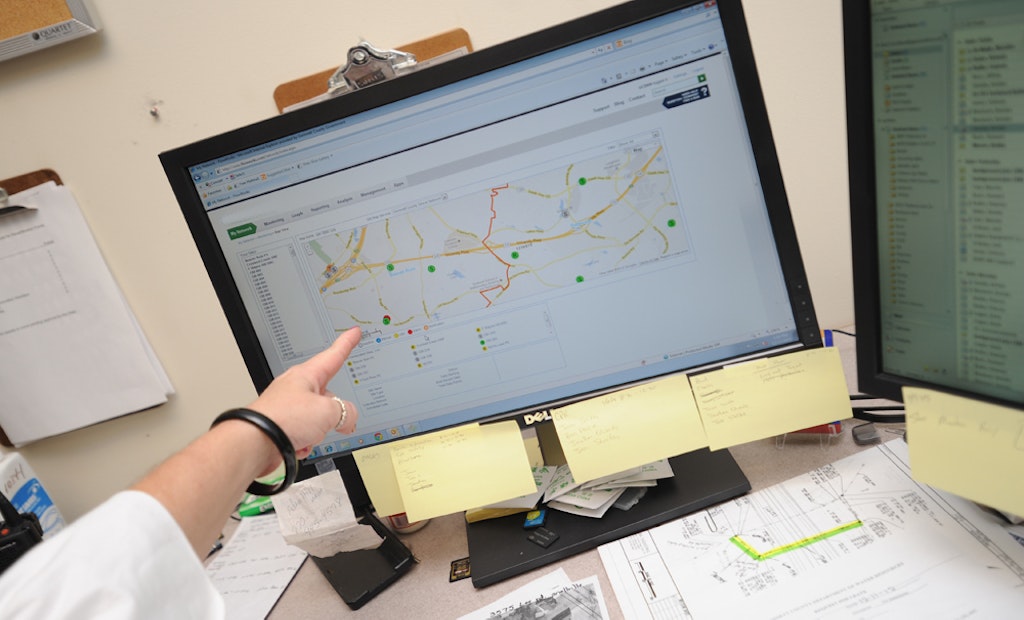
Interested in Infrastructure?
Get Infrastructure articles, news and videos right in your inbox! Sign up now.
Infrastructure + Get AlertsAs a public works professional, you know how valuable maintenance and asset management software is in your efforts to maintain and operate infrastructure cost-effectively.
Trouble is, you don’t always know which programs to use. There are many vendors, and a noisy marketplace of product claims to sort through.
To help you find optimum solutions, the nonprofit Water Finance Research Foundation (WFRF) has completed a comprehensive review of major computerized maintenance management and infrastructure asset management systems used by municipal governments and water and wastewater utilities in the United States and Canada. These systems were evaluated on the basis of such qualities as cost, vendor service and support, work orders, asset inventory and inventory control, Esri GIS integration and mapping, among others.
Software systems from 14 different suppliers were evaluated: Accela, Agile Assets, Azteca System’s Cityworks, Cartegraph, Cityview, EnerGov, IBM’s Maximo, Infor/Hansen, Lucity/GBA, Maintenance Connection, Novotx’s Elements, Oracle, Pubworks and Vueworks.
Today — in the first of four reports — we discuss the Asset Management capabilities of the evaluated systems. WFRF ranked them from 1-5 (5 being highest) in three categories: Condition Assessment Capabilities, Risk Management, and Asset Inventory and Hierarchy. Systems from five companies — Oracle, Accela, Cityworks, Maximo, and EnerGov — received perfect scores of 15 and achieved top ranking. Infor received 14 points in the evaluation.
Oracle’s Utilities Work and Asset Management software system was designed from the ground up specifically to be delivered over the Web. It is a fully integrated, highly scalable solution for managing asset life cycles. Key features include scalability, ease of use, fully integrated workflows, easy configuration, streamlined cost tracking and operational accounting, real-time enterprise-wide visibility, and reliable guidelines for regulatory compliance. www.oracle.com
Accela Asset Management allows the user to optimize the infrastructure and facilities that improve and enhance the quality of community life. It tracks and manages the life cycle of assets like water, wastewater, public works, streets, transportation, parks and recreation, stormwater, facilities and more. The system enables maximum utilization of available resources by analyzing combined information about staff, schedules, work orders and equipment to make informed decisions. www.accela.com
IBM Maximo Asset Management solutions provide single point of control over all types of assets — production, infrastructure, facilities, transportation and communications — by managing them all on a common platform which allows sharing and enforcement of best practices, inventory, resources and personnel. The software includes six management modules in an enhanced service-oriented architecture: asset management, work management, service management, contract management, inventory management and procurement management.
The Cityworks GIS-centric Asset Management Solution (AMS) is a critical part of the overall Enterprise Asset Management plan that can improve asset utilization, extending asset life and performance while reducing capital costs and asset-related operating costs. It helps decision-makers balance risk and cost, providing out-of-the-box inspection and monitoring tools (e.g., maintenance history and routine inspections) that are appropriate to assess likelihood of failure for many assets. www.cityworks.com
EnerGov’s Asset Management suite was designed to automate the management of capital facilities and infrastructure. It can be configured to allow agencies to determine appropriate assets to track, as well as asset details like inventories, maintenance, costing and comprehensive work orders. Its architecture allows seamless integration with a full range of hardware and software resources such as GIS and SCADA systems. www.energov.com
In the next article, we’ll look at the rankings for work management.





